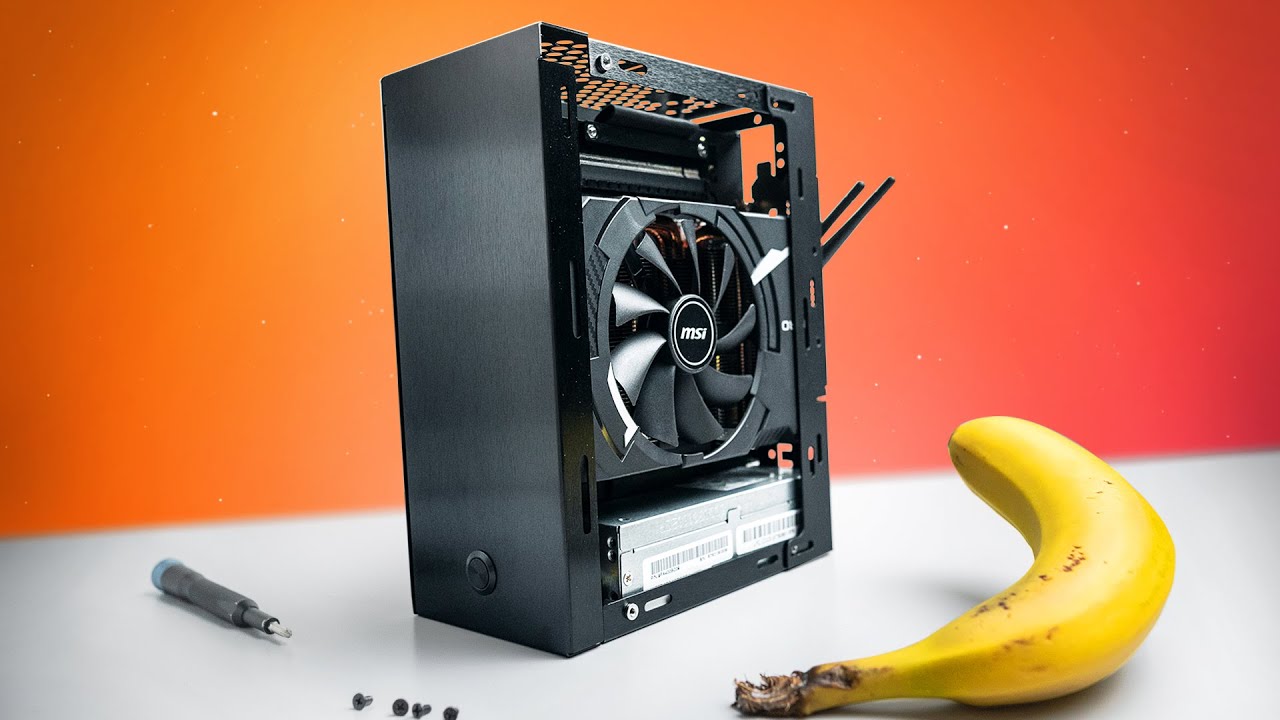Building small form factor gaming PCs (or an SFFPC, for short) is what a lot of folks dream of. Preserving desk/room space without losing any performance is undeniably an alluring idea and, well, it’s a lot easier to pull off than you’d expect!
Still, you’ll have to be very precise with your needs as no two SFFPC systems (of varying volumes) will deliver the same kind of experience. Moreover, depending on your use-case scenario, you might have to splurge a bit more as these components often come at a premium.
Some of these computers will have more parts soldered on the board than others. Some of them will have integrated hardware and will allow for very little (if any) upgrades further down the line, whereas others will give you a surprising amount of freedom. There’s something for everyone, as they say!
Finally, certain builds will be fairly “cheap” (a very relative term, we know) whereas others will undoubtedly burn a hole through your wallet. Be that as it may, you’ll have many options to choose from, regardless if you’re a grizzled IT head or a novice starting out!
Note: Have in mind that, for this article specifically, we’ll focus mostly on the size and volume of these computers — less so on their worth and price-to-performance ratios. We’ll touch on that as well (we have to, after all), but it won’t be a crucial criterion.
Velka 3
The Velka 3 is pretty much legendary for its petite nature! At just 3.9L, it is the de facto smallest gaming PC case on this list. It’s not perfect, mind you, but if you’re willing to tinker with certain aspects of the case and maybe replace its built-in power supply, you’ll end up with a supremely small build that’ll easily chew through any task/game you might throw its way!
It only supports ITX graphics cards, so you won’t be able to harness anything more powerful than an RX 6600 XT/3060 Ti, which, in all fairness, isn’t that big of a downside — it’s not like you’ll ever need a more potent GPU for such a compact build.
The K39 is pretty much a carbon copy (that’s also better in some regards), so definitely check that one out as well!
Intel NUC 9 Extreme
We already went through the whole Intel NUC family of products a few days ago, so we’ll try not to repeat ourselves too much here. The NUC 9 Extreme, in particular, was the first of its kind and, well, it garnered quite a lot of attention. While certainly flawed, it provided a fairly streamlined, mainstream solution for SFFPC enthusiasts.
Now that its price tag has decreased, it might be worth taking a look at if you’re okay with using an H-series CPU. It has a premium build, looks downright amazing, is just about 5L in volume, and has all the I/O you’ll ever need.
So if it’s just gaming you’re after and don’t mind using an ITX graphics card, then the NUC 9 Extreme might be an even better option than a “bespoke” Velka 3 build. It certainly has its drawbacks, but they might not be a dealbreaker to the right kind of user.
Intel NUC 11 Phantom Canyon
The NUC 11 Phantom Canyon is even more unique design-wise (in both good ways and bad), but is undeniably a spectacular little machine and can push a surprising number of frames in even the most demanding of triple A titles! Its RTX 2060 Max-P graphics card is more than capable enough for some serious gaming, and with more ports than you can shake a stick at, you’ll no doubt enjoy using this phenomenal little beast!
It’s also the smallest PC on this list, but that comes at a cost: it’s running an 11th Gen Tiger Lake U-series processor from Intel which, depending on your workflow, might be a bit too underpowered. It is by no means insufficient for daily tasks, but for any kind of prolonged, demanding workflow it’ll end up being a bottleneck.
And, well, the fact that neither its CPU nor GPU can ever be replaced means you’ll be stuck with the exact same configuration no matter what. Still, if it’s portability and power you’re after, the NUC 11 Phantom Canyon offers a spectacular mix and is without equal at the time of this writing.
AsRock DeskMini iGPU Build
The DeskMini line-up from AsRock is somehow both legendary and super niche. It’s a different take at the barebones formula: you get a motherboard, an external power supply, and a fairly slick enclosure all for around €150 — depending on the model, of course.
That means you’ll have to populate it with your APU of choice, and bring in an appropriate amount of RAM and storage as well. This, in short, is arguably the best possible option: maybe you don’t need a more powerful APU than a Ryzen 2400G? Conversely, you might want the latest and greatest 5700G — the AsRock DeskMini will accommodate both options.
The only drawback is that you’ll have to supply your own aftermarket cooler seeing how the included one sounds like a jet engine, and that the RAM modules are of the SO-DIMM variety (laptop ones). They’re not as easy to get ahold of and might sell for a premium depending on the market.
Alternatively, if the DeskMini X300 isn’t your jam for whatever reason, you could always go for the InWin Chopin, a slightly larger (but still extremely small) SFFPC case that has a built-in 150W power supply built in. You’ll just have to provide the CPU, motherboard, storage, and RAM (full-sized modules), and you’ll be good to go! Additionally, you could also slot in a Noctua L9a low-profile cooler and get even better temperatures (and lower noise levels)!
In any case, this kind of SFFPC set-up is absolutely stellar for anyone who is only focused on esports titles or emulation as it provides a phenomenal blend of power and affordability.
Zotac Magnus One
Last but certainly not least, we have the Magnus One from Zotac. This is an interesting product as it still hasn’t garnered nearly enough attention as it deserves. It’s not as small as other SFFPCs on this list (a bit over 8L in volume), but what it lacks in terms of compactness, it more than makes up for in hardware compatibility and sheer power.
Namely, at its core is an Intel’s (still powerful) i7-10700. We’re talking about an eight-core, sixteen-thread CPU here with a base clock of 2.9Ghz and a turbo of 4.8Ghz. It is manufactured on a 14 nm node so it’s about as far from cutting-edge as it gets, but don’t let that fool you as it’s still more than powerful enough for basically any workload.
And, the best part? These machines come pre-configured with either an RTX 3060 or 3070 — two obscenely potent graphics cards that’ll deliver an exceptional experience at both 1080p and 1400p. Heck, they’ll suffice for 4K as well if the game supports NVIDIA’s DLSS!
Unexpectedly Well-Rounded
It is a bit noisy when under full load, but that’s a small price to pay for a machine this compact and powerful. It also sports a premium, metal build and is easily upgradeable further down the line, so it’s sort of a jack-of-all-trades kind of option.
And, well, it might be your only shot at acquiring an RTX 3060/3070 which, given the times we live in, is nothing to scoff at! Simply put: the Zotac Magnus One is one of the most complete aftermarket SFFPC options for gaming!
Alternatively, you could always opt for a “regular” SFFPC build with a Dancase A4 or LOQUE Ghost S1 and still end up with a computer that’s around 8L in volume. Doing so would provide you with the most flexibility, but it would also require more research, knowledge, and tech-savviness.







